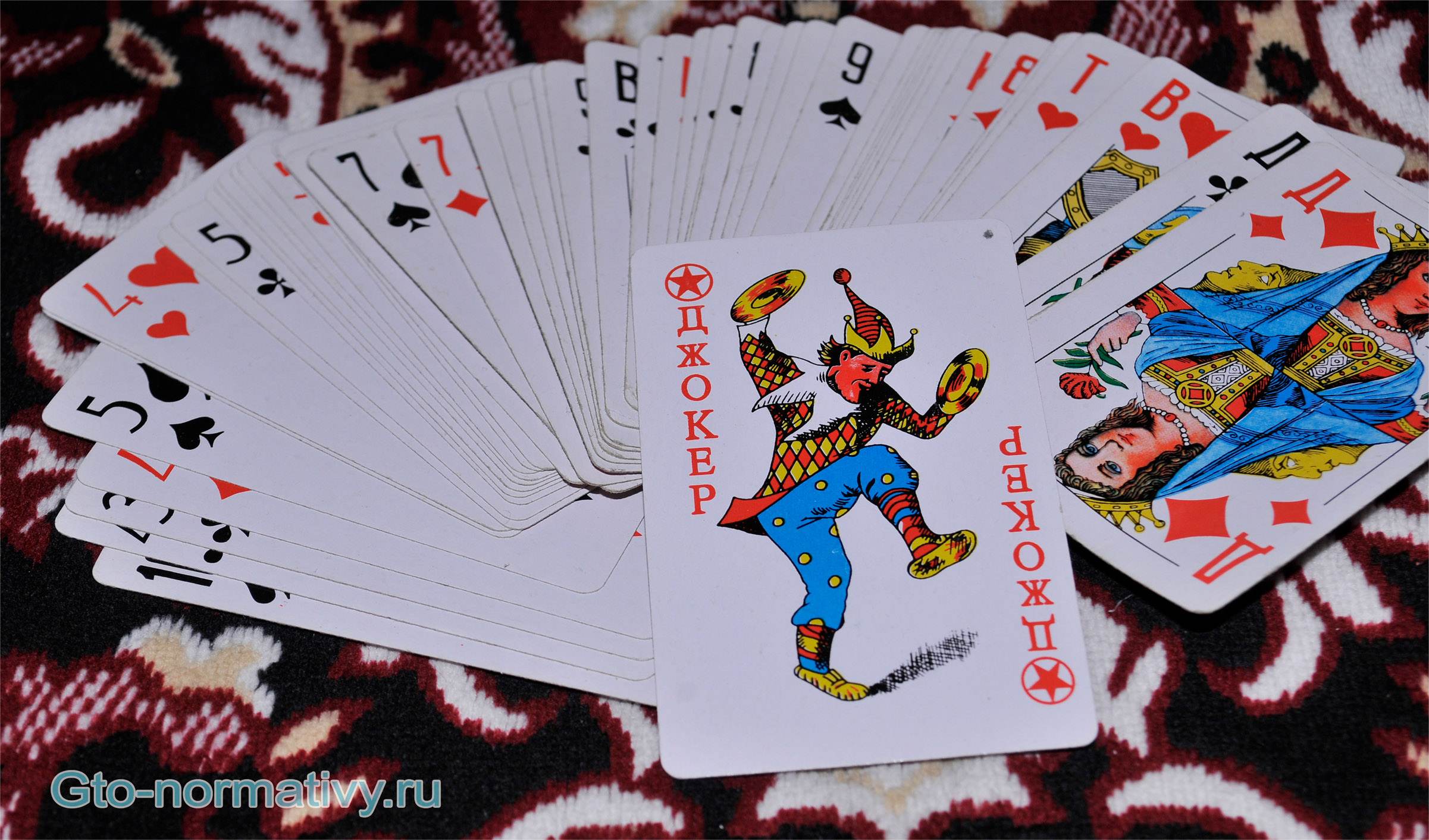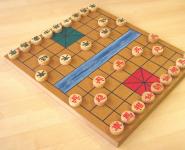Rules for playing the fool, throwing cards, transfer cards
One of the most common and simple board games is still considered to be the fool card game. To play you will need a deck with 36 cards, from two to six players. You can play each for yourself, or you can play in pairs 2 by 2, or 3 by 3. The one who gets rid of all the cards first wins this game. If a team is playing, then the first to be left without cards from the team are recognized as winners.
The leader is the one who moves first and then the first toss the cards. A simple game is one that does not provide for a toss of cards other than the face value from which the move began. In other words, or the opponent beat off the cards of the same denomination placed on the table, they are discarded into the rebound and the right to move passes to him.
Rules of "thrown fool" standard game
 The simplest game of this type. The players are dealt each 6 cards, the trump card “shines” from the remaining deck. If the cards are dealt completely (when six players play), either the last card in the deck or the suit highlighted by the dealer is considered a trump card. The rest of the cards are stacked on top of the trump card and later serve as an opportunity to replenish the stock. The player who has the lowest value trump card (usually a six) starts the game. If there are several players, the opponent located to the left of the leader begins to fight back first. As a rule, the move starts with the card of the lowest denomination (from the six), and in the absence of one, it goes up. At the same time, the rules of the game do not restrict the player's right to make a move with any card (even a trump ace!), which is in his possession. The main task is to eventually be the winner and make the opponents (opponents) hold the cards in their hands.
The simplest game of this type. The players are dealt each 6 cards, the trump card “shines” from the remaining deck. If the cards are dealt completely (when six players play), either the last card in the deck or the suit highlighted by the dealer is considered a trump card. The rest of the cards are stacked on top of the trump card and later serve as an opportunity to replenish the stock. The player who has the lowest value trump card (usually a six) starts the game. If there are several players, the opponent located to the left of the leader begins to fight back first. As a rule, the move starts with the card of the lowest denomination (from the six), and in the absence of one, it goes up. At the same time, the rules of the game do not restrict the player's right to make a move with any card (even a trump ace!), which is in his possession. The main task is to eventually be the winner and make the opponents (opponents) hold the cards in their hands.
The task of the battling player is simple. He needs to cover all the cards that he has to beat. When there is still an additional value in the walking player, with which the enemy fights back, he can (but no one obliges him to do this) toss it. You can “beat” a suit only with the highest denomination of one suit. If there is none, you can use trump cards. It must be remembered that the trump cards themselves "beat" only trump cards of the highest suit. The maximum number of cards that can be flipped per turn is six. This rule applies even when the player has already managed to collect more cards from previous unsuccessful attempts to fight back.
Video rules and fool's story:
After the leader has finished tossing cards, this right comes from the rest of the players (only from one team). Now they can toss cards to the batter. After all the tossed cards are covered, those present no longer have a face value for tossing (or there is no desire to toss), the move is considered over, and the cards are turned over. Then each of the players replenishes the missing number of cards from the deck up to six. The replenishment begins with the one who started the move, and then those present replenish their cards clockwise. The battling takes the last from the deck (what remains). After that, he has the right to move to the next player to the left. If a pair of players plays (two or three), and the battling player is completely out of cards, but he completely fought off the opponents, the right of the next move passes to the next player on the left side of his team.
If the battling player could not cover all the cards that other players put to him to hang up, he must take all the cards. Then he skips the right of his turn, it passes to the next player (opponent or from another team).
Participant is declared the winner who managed to get rid of all the cards first. It is necessary to take into account the inability to replenish them through the deck.
Translation Fool
Another common form of this type of game is the translation Fool. The essence of this game is similar to the throw-in Fool described above. Ultimately, you need to leave your opponent with the cards, and get rid of them completely yourself. You can play as each for himself, and in pairs. The maximum that can be simultaneously attracted to the game is 6 people.
The main highlight of this type of game is a small rule, when each battler has an additional right to “transfer” the need to fight back to another player. This is done in the following way. After the walking player puts the first card on the table (or several of the same denomination at once), the batter can either start to beat them off, or supplement this move with a card of the same denomination. For example, if the move was a six, he simply puts another six and thus transfers the right to fight back to the next opponent sitting on his left. If the next player also has a card of the same denomination in his hands, he can put it down, thereby transferring the right to hang up to the next from the team.
Separately, it should be noted the right of the trump card. When the player has a trump card of the denomination being played, he has the right to simply show it to those present, thereby transferring the need to end the move to the next from the opposing side. This right is valid once per game (in other words, a separate move). If the circle is closed, and the need for a retreat returns to the one who has a trump card, then in order to transfer the retreat from himself, he must now lay out this card. It is important to note that in the case of a pair competition, the transfer is carried out sequentially from the players of different teams, adhering to the rule of the person sitting on the left.

Playing Durak with pagons
A more difficult option for playing Durak with cards is the game with pagons. Required for 2 to 6 players. It is optimal if 4 people compete at the same time, acting as two opposing teams. The essence of this game is to finish the game in a certain way. Namely, “hang” pagons of a certain denomination. To do this, you need to force the opposing player to accept (pick up) the cards, and after that give him "pagons", or, in some cases, completely beat off all the moves in his direction and simply hand over "pagons".
Hanging pagons should start with sixes, then sevens and in ascending order. The last pagon that is hung in this game is a queen of a certain suit. Therefore, in the process of increasing, ladies are skipped and are the last ones. It is important to note that only simple pagons can be “hung” (trump cards of this denomination are not taken into account if they are not hung together with a simple card of the same denomination, except for a lady). The number of cards that you hang as pagons can be different (from one to 4, except for the lady, who is hung alone and exclusively of the chosen denomination).
It should be noted that the game of pagons can be with the right to move cards that are pagons, or without it. In the first case, the whole game is carried out according to the principle of playing a simple throw-in Fool. The second type of confrontation between the parties is somewhat more complicated. Indeed, here, if the move of the opposite side is carried out from the "pagon", then the defender must pick up this card, regardless of the possibility of repulsing it. He is forbidden to walk in pagons, even if only high-level trump cards remain in denominations.
If a double game is carried out, and the beating player has no more cards besides pagons, they are not hung up, but transferred to the next player of the team, except when all players of one team have only pagons in their hands (then they are simply hung up). After the transfer of pagons, the turn passes to the players of the opposite team. The game continues until the pagons are hung.


